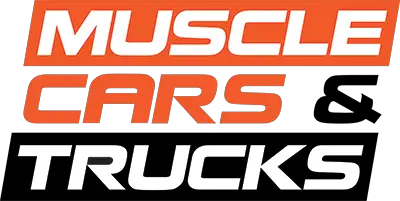Dodge’s new-for-2024 electric Dodge Charger Daytona has some big shoes to fill – and plenty of V8-loving muscle enthusiasts to win over.
On sale continuously for nearly 20 years, the outgoing sixth-generation Dodge Charger managed to move more than one-and-a-half million units in North America, and for a while, it seemed that there was no end to the number of refreshes, remixes, and special editions Mopar could cook up to renew interest the instant it started to wane. All the while, it was worming its way into the hearts and minds of performance vehicle fans across the continent, with hits like the SRT Hellcat, the SRT Hellcat Redeye Widebody, the Redeye “Jailbreak” model, and of course, the drag strip-devouring SRT Demon and Demon 170. Asking the brand’s countless faithful loyalists to give all that up and come along on the brand’s first foray into electrification is like asking Guy Fieri to give up red meat.
So how does Dodge plan on winning over the scores of petrol-swilling, exhaust burble-loving Charger stans and get them onboard with an electric Dodge Charger? By packing it with one hell of an electric powertrain.

The 2024 Dodge Charger Daytona will offer two powertrain options from launch, both packing two motors – one for each axle – with standard all-wheel drive. Each motor on its own is good for up to 335 horsepower and some 300 lb-ft of torque, and each is packaged into what Dodge calls an “electric drive module,” or “EDM,” meaning that the inverter and gearbox are integrated with the motor into a single unit.
Just as alluring, the front EDM features a wheel end disconnect – ostensibly to boost efficiency and range, although in the Scat Pack, it serves a key role in enabling certain special drive modes – while the rear unit boasts a standard mechanical limited-slip differential. That could mean either a Torsen or a clutch-type LSD, and so far, Dodge has yet to divulge that information. Either way, it should make for clever torque distribution and improved traction and performance.
The result, as it concerns the launch version of the new electric Dodge Charger Daytona Scat Pack, is an expected 0-to-60 sprint time of 3.3 seconds and an estimated 11.5-second quarter-mile – enough to out-accelerate the outgoing SRT Hellcat Redeye Widebody. That’s despite having significantly less horsepower – 670 vs. 797 – and seven fewer forward gears.

How does the new Scat Pack do it? While horsepower is a decent proxy for straight-line performance when comparing two like cars, it doesn’t tell the whole story, and it’s an especially misleading figure when comparing electric and internal combustion. What really matters is the area under the torque curve across the entire operating range – in simple terms, how much torque you have, and for how long you have it. Here, electric motors excel because they deliver momentous torque from near-zero RPM, and they keep on delivering it until very high in the operating range. Without any reciprocating mass to worry about, they also rev quite high, often topping out at around 10,000 to 20,000 RPM in a typical road car, so the single-speed gearbox isn’t such a concern. Engineers can select a relatively short gear ratio for abundant torque multiplication without running the risk of topping out at a low speed.
Both the 2024 Dodge Charger Daytona R/T and Charger Daytona Scat Pack are fed by the same 400-volt battery, packing 100.5 kWh of capacity for an expected 260 miles of range in the Scat Pack, or more than 317 miles in the R/T. Of greater importance to performance fans, this battery pack features a high-energy-density nickel cobalt aluminum chemistry, yielding a peak discharge rate of 550 kW, or about 737 electric horsepower. Now, that isn’t to say that Dodge is holding out on us with its 670-horsepower rating for the Scat Pack launch edition; electric power is not the same as mechanical power, and there are losses throughout the powertrain stemming from the conversion to 3-phase power, the resistances of the wires, and the intrinsic less-than-perfect efficiency of electric motors. But it does help to explain how the electric Dodge Charger able to deliver such blistering acceleration.
While there are EVs with 800V batteries on the market, for the time being, 400V remains the norm. In theory, 800V systems like the one headed for the range-topping “Banshee” model allow for more efficient power delivery, enabling the same electrical power with less current. That means less energy lost to heat, and less heat means less resistance, which has been a major contributor to performance fall-off on some EV models. But Chief Engineer Audrey Moore assures us that Dodge has taken measures to limit heat accumulation and ensure repeatable performance with minimal fall-off, including using prismatic cells for their favorable thermal performance, and deploying cooling plates where necessary. The automaker took a “no compromise” approach to balancing the needs of drag strip and road course drivers in the electric Dodge Charger, she says, with new Race Prep options designed to help the battery reach its optimal operating temperature in both use cases.

If all that isn’t enough, there’s the 2024 Dodge Charger Daytona Scat Pack’s party piece: two new drive modes dubbed “Drift Mode” and “Donut Mode”. These are exclusive to the Scat Pack, and the latter sounds particularly clever, softening the front suspension and stiffening the rear, and allowing the driver to select one of three different slip angles. The powertrain then operates in a rear-biased mode, where the front axle simply pitches in to help maintain the chosen angle of slip. The former simply deactivates the front motor and allows the car to pirouette around the front axle with no traction control intervention.
Even with all this, there’s still a chance that Dodge Charger fans won’t bite – that the Hurricane I6-powered 2024 Dodge Charger will outperform its pure-electric counterpart in the showroom. But that’s a possibility that Dodge is well-positioned to tackle, ready to shift focus from the electric Dodge Charger to its gasoline-sipping cousin to suit market demands. For her part, Chief Engineer Audrey Moore is just proud to be “taking Dodge into the next generation… [of] making a car that everyone will want,” be they EV fans or petrolheads.





